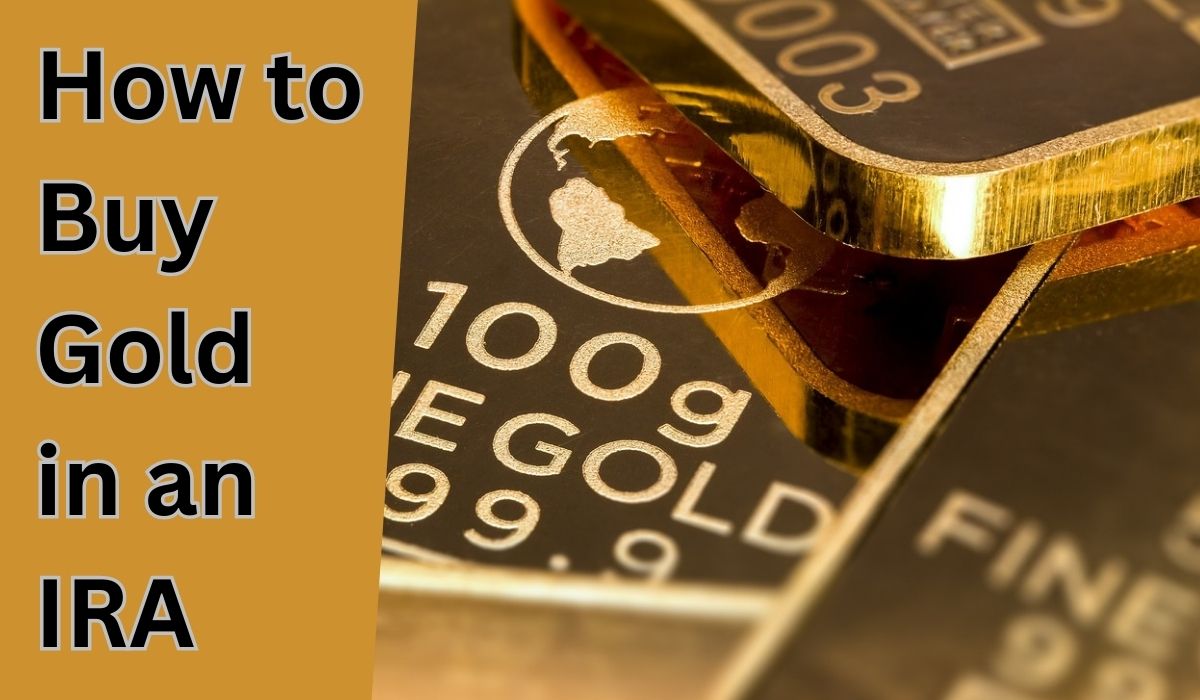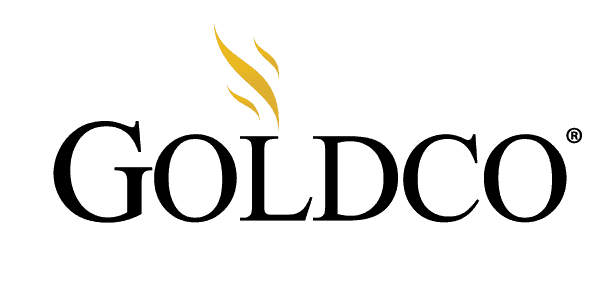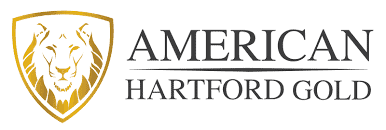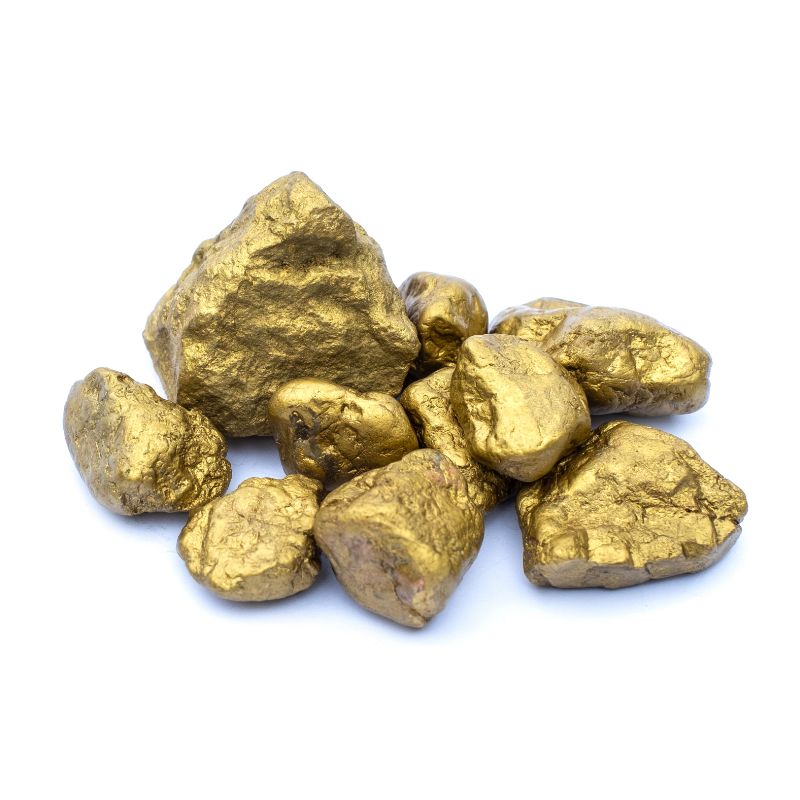How to Buy Gold for IRA: A Clear and Confident Guide

Investing in gold for an individual retirement account (IRA) is often praised as a way to diversify one’s investment portfolio. While the stock market can be quite volatile, gold and other precious metals are seen as a hedge against inflation, potentially increasing in value during periods of market instability. As someone interested in securing their financial future, it’s important to be aware of the available opportunities for buying gold in an IRA.
A gold IRA is a self-directed account that primarily invests in physical gold, as well as other precious metals. It’s vital to understand that not all IRAs allow the inclusion of gold, therefore, one must specifically opt for a self-directed IRA offered by certain custodians. Before proceeding, potential investors should be informed of the higher fees often associated with gold IRAs in comparison to more traditional IRAs.
Setting up a gold IRA involves choosing a reputable company that offers such accounts, meeting account minimum requirements, and adhering to IRS regulations. By following these steps and thoroughly researching the subject, I can successfully invest in gold for my IRA and take another stride towards a more stable financial future.
Why Invest in Gold for IRA
Hedge Against Inflation
I personally find investing in gold for my IRA to be a smart move as it provides a hedge against inflation. With inflation, the purchasing power of currency tends to diminish over time. Throughout history, gold has proven to maintain its purchasing power and even appreciate in value. This helps protect my retirement savings from the devaluation that often comes along with high inflation rates.
Diversification
Another reason I invest in gold within my IRA is for portfolio diversification. By allocating a portion of my retirement savings to investments in physical gold, I am able to spread risk across various asset classes. This diversity helps to protect my investments from the impact of stock market fluctuations and economic downturns. Diversification is a key strategy for minimizing risk in any long-term investment portfolio, and gold plays a solid role in this strategy.
Historical Performance
Lastly, I am attracted to gold investments within my IRA due to gold’s historical performance. Over the course of time, gold has shown a consistent increase in value, making it a reliable long-term investment option. While past performance is not a guarantee for future growth, I find reassurance in gold’s track record, and it adds another layer of confidence in the stability of my IRA.
By including gold in my IRA, I take advantage of its ability to act as a hedge against inflation, diversify my portfolio, and gain from its historical performance.
Types of Gold Investments
As an investor considering gold for an Individual Retirement Account (IRA), it’s crucial to understand the different types of gold investments available. In this section, I will discuss three primary gold investment options: Physical Gold, Gold ETFs, and Gold Mining Stocks. Let’s dive deeper into these forms of gold investments.

Physical Gold
When it comes to investing in gold for an IRA, physical gold is the most traditional and tangible option. Physical gold includes gold bullion bars and coins, with investment-quality gold bars being at least 99.5% pure gold. It’s essential to note that the Internal Revenue Service (IRS) sets specific requirements for gold in an IRA. To invest in physical gold, look for reputable gold IRA companies to handle the storage and investment.
- Advantages: Ownership of tangible assets, protection against inflation, and relatively stable value over time
- Disadvantages: Storage fees, limited liquidity, and higher initial investment costs
Gold ETFs
Gold Exchange Traded Funds (ETFs) are another popular option for investing in gold without actually owning physical gold. Gold ETFs are financial products traded on stock exchanges and can be included in an IRA. These ETFs are designed to track the price of gold without requiring investors to store or handle actual gold bars or coins.
- Advantages: Liquid investment, no storage hassle, professional management, and lower initial cost
- Disadvantages: No physical ownership, fees associated with ETFs, and potential tracking errors
Gold Mining Stocks
Investing in gold mining stocks involves purchasing shares in companies that extract, process, and sell gold. The performance of these stocks is generally tied to the gold market and the profitability of the specific companies. It’s crucial to research the companies you’re interested in, as there are varying degrees of risk involved in owning mining stocks.
- Advantages: Exposure to the gold market, potential for capital appreciation, and diversification
- Disadvantages: Company-specific risks, potential for losses, and may not follow gold prices entirely
In conclusion, gold investments can offer a variety of benefits as part of a rounded IRA portfolio. Carefully consider the risks, costs, and benefits associated with each type of investment to make an informed decision that aligns with your financial goals and risk tolerance.
Eligible Gold for IRA
Gold Bullion
When investing in gold for my IRA, I have the option to choose gold bullion, which refers to gold that is highly pure and in metal form rather than coins. These can be either gold bars or intricate designs that resemble coins. It’s important to know the gold bullion for an IRA must meet a minimum purity requirement of .995, which ensures I’m investing in a high-quality gold product.
Gold Coins
Another attractive option for my gold IRA investment is gold coins. IRA eligible gold coins must meet specific purity guidelines, which are typically .9999 or .9167. The most common coins that meet these guidelines are the American Eagle Bullion coins, American Eagle Proof coins, 1 oz. American Buffalo coins, 1 oz. and 1/10 oz. Pearl Harbor coins, and Australian Kangaroo coins. Choosing IRA-approved gold coins allows me to diversify my investment by adding recognized and sought-after coins to my portfolio.
Gold Bars
Gold bars can also be included in my gold IRA investment. These generally come in larger weights and can be more cost-effective compared to gold coins or smaller bullion products. To be eligible for my gold IRA, gold bars should have a minimum fineness of .995 – this confirms that the gold bars are high in purity and suitable for the IRA investment. By adding gold bars to my IRA portfolio, I can benefit from their high purity, lower premiums, and ease of storage and liquidity.
Remember, it’s essential to ensure that the gold products I choose for my IRA meet the eligibility requirements set by the Internal Revenue Service (IRS) to maintain compliance and take full advantage of the tax benefits offered by a gold IRA investment.
Setting Up a Gold IRA
Choose a Custodian
To invest in gold for your IRA, you first need to choose a custodian to manage your account. A gold IRA custodian is typically a financial institution or brokerage firm that specializes in precious metal investments. I would recommend researching different custodians, comparing their fees, and reading customer reviews to determine which one is best suited for my needs.
Open and Fund the Account
Once I’ve chosen a custodian, I can open a self-directed gold IRA account. This step involves providing personal information, such as my name, address, Social Security number, and employment details. After opening the account, I need to fund it with an initial deposit. This can be done by transferring funds from an existing IRA or retirement account, or by making a new contribution if I’m eligible. Be sure to note any contribution limits and eligibility rules, as these can vary depending on the type of IRA.
With the account open and funded, I can now start investing in physical gold. It’s essential to remember that gold IRA investments must be stored in a depository that meets the Internal Revenue Service (IRS) requirements. My gold IRA custodian may have a partnership with a depository, making it easier for me to coordinate the storage of my gold.
In conclusion, setting up a gold IRA requires selecting a trusted custodian, opening and funding the account, and purchasing gold within the account. By following these steps, I can diversify my retirement savings and protect my wealth by investing in gold.
Steps to Buy Gold for IRA
Research Gold IRA Companies
When considering investing in gold for an IRA, it is essential to research reputable Gold IRA companies to ensure the best possible outcome. There are several top contenders in the market, and I will examine three popular choices: Augusta Precious Metals, Goldco, and Noble Gold.
#1 Augusta Precious Metals
Augusta Precious Metals is a reputable Gold IRA company that offers a variety of gold and silver investment options for retirement accounts. They have a team of professionals who guide clients through the process and provide personalized customer service. Some benefits of working with Augusta Precious Metals include:
- Educational resources
- A transparent fee structure
- A buyback policy
#2 Goldco
Another well-known Gold IRA company is Goldco. They specialize in helping clients diversify their IRA with gold and silver investments. Goldco offers a range of precious metal products for retirement accounts and emphasizes customer satisfaction. Some advantages of choosing Goldco include:
- Excellent customer service
- A knowledgeable team of investment specialists
- Competitive pricing
#3 Noble Gold
Noble Gold is a trusted name in the industry, offering an array of gold and silver investment options for IRAs. They focus on customer service and transparency, making it easier for clients to make informed decisions. Some benefits of working with Noble Gold include:
- A simple and straightforward process
- A commitment to client education
- Secure storage options
Compare Prices
Once you have researched various Gold IRA companies, it is important to compare prices. Factors to consider when comparing prices include:
- Setup fees
- Annual fees
- Storage fees
- Precious metal prices
Comparing these prices will help you find a Gold IRA company that meets your budget and is worth the investment.
Review Storage Options
Lastly, storage options play a vital role in gold IRA investments. Typically, gold IRA companies work with qualified custodians who store the precious metals in approved depositories. When reviewing storage options, consider the following:
- Location of the depository
- Security features of the depository
- Storage fees
Choosing the right storage option will ensure the safety of your gold investment and provide peace of mind.
Pros and Cons of Gold IRA
Advantages
Investing in a Gold IRA offers numerous benefits for investors. First and foremost, it provides portfolio diversification. While stocks and bonds are often considered sufficient for diversification, a Gold IRA can offer additional protection during significant market crises or systemic events where both bonds and stocks lose value.
Another advantage of a Gold IRA is the tax benefits it can offer. Depending on the type of Gold IRA you open, you may enjoy tax advantages either when you contribute funds or during distributions. This can make it an attractive investment option for those looking to maximize their retirement savings.
Disadvantages
Despite the potential benefits, there are also some drawbacks to consider when investing in a Gold IRA. One challenge is finding a suitable custodian to manage your gold investments. Most mainstream IRA custodians and brokers do not have the capacity to open and operate a gold IRA, so you will need to search for a specialized trustee with expertise in this area.
Another disadvantage is that Gold IRAs may have higher fees compared to traditional IRAs. This is due to the additional costs associated with storing physical gold, such as insurance and storage fees. As a result, it is essential for investors to weigh the potential benefits against the extra costs associated with Gold IRAs before making a decision.
Maintaining and Monitoring Gold IRA
Annual Fees
When it comes to maintaining my gold IRA, I have to consider the annual fees associated with it. Annual fees may include a combination of storage fees, maintenance fees, and administrative fees. Storage fees are necessary because my physical gold must be stored securely in a depository, while maintenance and administrative fees typically cover the services provided by my gold IRA custodian.
It’s important for me to understand the fee structure of my gold IRA provider to avoid any surprises down the line. Often, these fees are a flat rate or a percentage of the account value. By comparing different gold IRA providers, I can find a reasonable and competitive fee structure that meets my investment needs.
Taxes
As an investor, I know that taxes play an essential role in my gold IRA. Unlike investments such as stocks and bonds, gold does not generate income, and it is a long-term capital gain/loss that comes into play when I sell my gold holdings. While my investments are held inside the IRA, their growth is tax-deferred, meaning I won’t have to pay taxes on any gains until I take withdrawals.
Moreover, the contributions I make to my gold IRA may be tax-deductible, depending on my income and whether I have other retirement accounts. When the time comes for withdrawals, my distributions will be taxed as ordinary income.
Withdrawals
As an investor, I’m aware that accessing my gold IRA funds should be done carefully and within the rules set by the IRS. Withdrawals from a gold IRA follow the same guidelines as traditional IRAs, meaning I can start penalty-free withdrawals once I reach the age of 59 1/2. If I decide to withdraw funds before this age, a 10% early withdrawal penalty may apply.
When it’s time to take distributions, I’ll coordinate with my gold IRA custodian to sell my gold holdings at a competitive market rate. The sale proceeds will then be distributed to me either as cash or as a check.
By keeping a close eye on my gold IRA’s annual fees, taxes, and withdrawals, I can ensure my investment stays aligned with my financial goals and meets the regulations set forth by the IRS.
Frequently Asked Questions
What gold qualifies for IRA investment?
In my experience, not all gold products can be held in an IRA. The Internal Revenue Service (IRS) has specific requirements for gold to be eligible for investment in an IRA. Approved gold products must be at least 99.5% pure, and can include gold bars, coins, and bullion. Some popular choices include American Gold Eagles, Canadian Gold Maple Leafs, and Gold American Buffalo coins.
How to set up a self-directed gold IRA?
To set up a self-directed gold IRA, I would first choose a reputable gold IRA custodian, who will help me through the process. The custodian will establish a new self-directed IRA or facilitate the transfer of an existing IRA. Then, I would work with a trusted precious metals dealer to select eligible gold products to purchase for my IRA.
What are typical gold IRA fees?
Gold IRA fees often include account setup fees, annual account maintenance fees, storage fees for the gold, and transaction fees for buying or selling the gold. I’ve found that setup fees can range from $50 to $250, annual maintenance fees from $50 to $300, and storage fees between $100 and $300, depending on the gold IRA provider.
Which companies are top choices for gold IRAs?
There are many gold IRA companies, but some that I found noteworthy based on their reputation and services are:
- Augusta Precious Metals
- Goldco
- Birch Gold Group
- Noble Gold Investments
- Regal Assets
These companies offer a range of gold IRA services, competitive fees, and are known for their customer support.
Are gold ETFs eligible for IRA investment?
Yes, gold ETFs (exchange-traded funds) can be eligible for investment in an IRA. These ETFs are a convenient way for me to gain exposure to gold without actually holding physical gold. Some popular gold ETFs include SPDR Gold Shares (GLD), iShares Gold Trust (IAU), and Aberdeen Standard Physical Gold Shares ETF (SGOL).
How does a gold IRA rollover work?
A gold IRA rollover occurs when I transfer funds from my existing retirement account, such as a 401(k) or traditional IRA, to a new self-directed gold IRA. This is typically a tax-free transaction if done correctly. First, I would need to find a reputable gold IRA company to help with the rollover process. My existing IRA custodian would then transfer the funds directly to the new gold IRA custodian, or I may receive a check to deposit into the new account within 60 days to avoid taxes and penalties. Once the funds are in the new gold IRA, I can use them to purchase eligible gold products for my investment portfolio.




